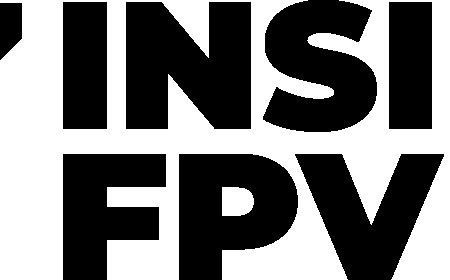Understanding Fetal Development: A Journey from Conception to Birth
Fetal development is a remarkable process that transforms a single fertilized cell into a fully-formed human being. This intricate journey spans approximately 40 weeks, divided into three trimesters, with each stage marked by critical growth milestones. Understanding fetal development not only deepens our appreciation of life but also highlights the importance of prenatal care and maternal health.
In this comprehensive guide, we explore each phase of fetal development and the amazing transformations that take place inside the womb.
The Stages of Fetal Development
Fetal development can be broadly divided into three main stages: the germinal stage, the embryonic stage, and the fetal stage. Each of these stages plays a critical role in shaping the babys anatomy, physiology, and overall health.
Germinal Stage
The journey begins with fertilization, when a sperm cell unites with an egg to form a zygote. This single cell contains all the genetic information needed to create a new life. Within hours, the zygote begins to divide and multiply as it travels down the fallopian tube toward the uterus.
By the end of the first week, the zygote becomes a blastocysta hollow ball of cells. Around days 6 to 10, the blastocyst implants itself into the uterine wall, marking the beginning of pregnancy. This implantation triggers hormonal changes in the mother's body, signaling the body to support the developing embryo.
Embryonic Stage
The embryonic stage is when most of the major organs and body systems begin to form. This is also a time of rapid cell differentiation and growth.
Foundations of Life
By the third week, the neural tube forms, which will eventually develop into the brain and spinal cord. The heart also begins to form and starts beating by the end of week 4. Small limb buds appear, and the foundation for eyes, ears, and other facial features is laid.
Organ Formation
During weeks 5 and 6, the embryo starts forming its major organs, including the liver, kidneys, and lungs. Limb buds elongate, and tiny fingers and toes begin to emerge. Facial features become more defined, and the brain continues to grow rapidly.
Movement Begins
By week 7, the embryo is developing a more human-like appearance. The head is large compared to the body, and facial features such as nostrils and the beginnings of the eyes become visible. Although too small to be felt, spontaneous movements begin as the nervous system becomes more complex.
Fetal Stage
The fetal stage marks the longest period of pregnancy and involves the growth and maturation of all systems that were established during the embryonic stage.
First Trimester
In the early fetal period, the baby is about the size of a grape. Organs continue to develop, and the reproductive system begins to form. By the end of the first trimester, the fetus can make small movements, open and close its fists, and even yawn. The placenta, which provides oxygen and nutrients, is fully functional by this point.
Second Trimester
This trimester is often considered the most comfortable phase of pregnancy for the mother, and its a time of significant development for the baby.
Growth and Development
By week 16, the baby can hear external sounds, and facial expressions begin to form. The skin is translucent, and a fine layer of hair called lanugo covers the body. By week 20, the babys gender can usually be determined through ultrasound, and the mother may start feeling fetal movements, often referred to as "quickening."
Viability Increases
As the fetus continues to grow, fat begins to accumulate under the skin, and vital organs like the lungs and brain undergo critical development. By the end of the second trimester, the baby is more than a foot long and weighs about 1.5 pounds. At this point, theres a limited but increasing chance of survival if born prematurely.
Third Trimester
The final stretch of pregnancy is focused on weight gain, brain development, and preparing for life outside the womb.
Brain and Lung Maturity
The brain undergoes a major growth spurt during the third trimester, forming billions of neurons. The lungs continue to mature and produce surfactant, a substance that helps keep the air sacs open after birth. The digestive system also prepares for feeding, though the baby receives all nutrition through the placenta until birth.
Movement and Positioning
By weeks 32 to 36, the baby typically shifts to a head-down position in preparation for birth. The fetus becomes more active, with noticeable kicking, stretching, and even hiccups. The immune system begins to develop as antibodies from the mother pass through the placenta.
Final Preparations
As the due date approaches, the baby's organs are fully developed and functional. The skin becomes less wrinkled, and fat stores provide insulation. Around week 40, the baby is considered full-term and ready for delivery.
Importance of Prenatal Care During Fetal Development
Proper prenatal care plays a critical role in ensuring healthy fetal development. Routine checkups allow doctors to monitor the babys growth, identify potential complications early, and provide nutritional and lifestyle guidance to the mother.
Nutrition and Supplements
A balanced diet rich in vitamins and minerals, especially folic acid, iron, and calcium, supports fetal development. Prenatal vitamins help fill any nutritional gaps and reduce the risk of birth defects and developmental delays.
Avoiding Harmful Substances
Substances like tobacco, alcohol, and certain medications can interfere with fetal development and increase the risk of miscarriage, premature birth, or congenital disabilities. Pregnant women should always consult their healthcare provider before taking any new medications or supplements.
Milestones in Fetal Development
Throughout pregnancy, key milestones indicate that development is progressing normally. Some of these include:
-
Heartbeat detection: Around via ultrasound
-
Fetal movements: Typically felt between 1
-
Hearing development: Begins around
-
Lung maturity: lungs are typically ready for breathing outside the womb
-
Full-term: At baby is considered ready for birth
Conclusion:
Fetal development is a complex and awe-inspiring process, shaped by biology, genetics, and environmental factors. From a single cell to a fully formed newborn, each week brings remarkable changes that prepare the baby for life outside the womb.


































![Play99 Login & Registration Guide for Indian Users [2025 Update]](https://www.atlantanewsplus.com/uploads/images/202507/image_140x98_6870c1df7bfcd.jpg)